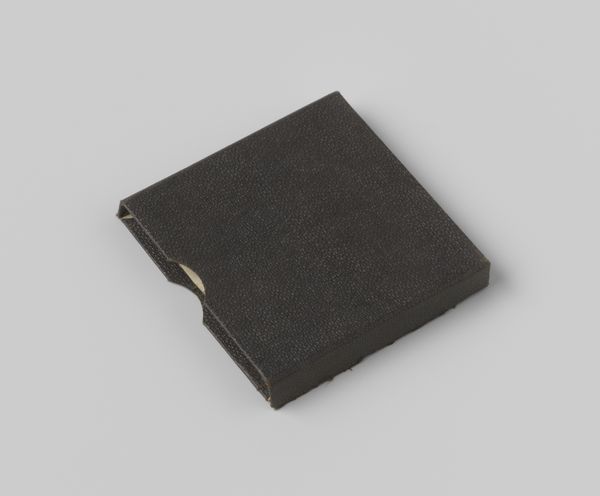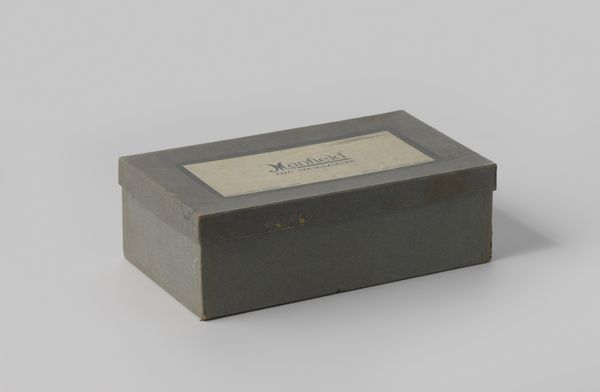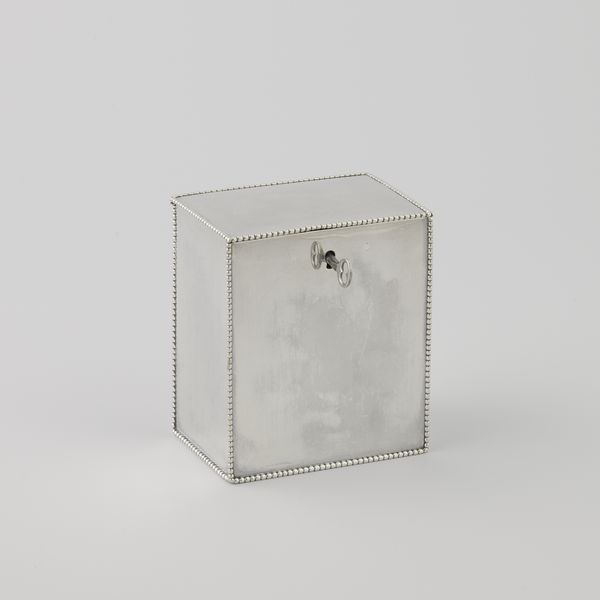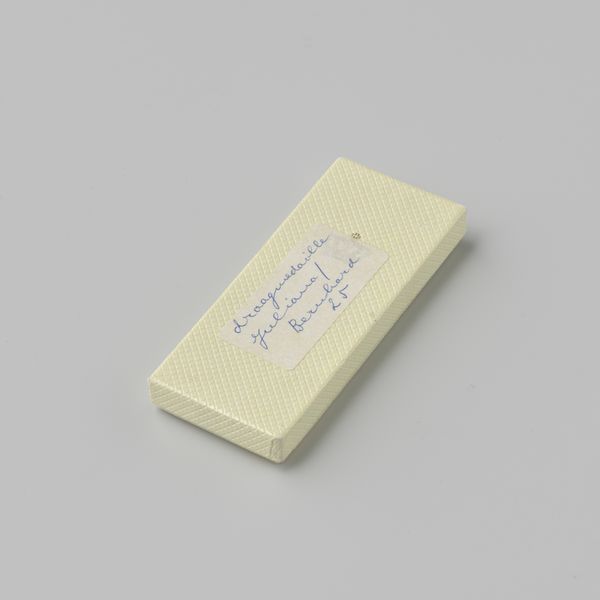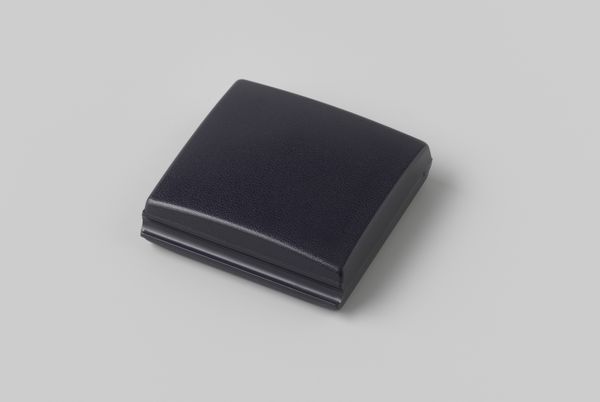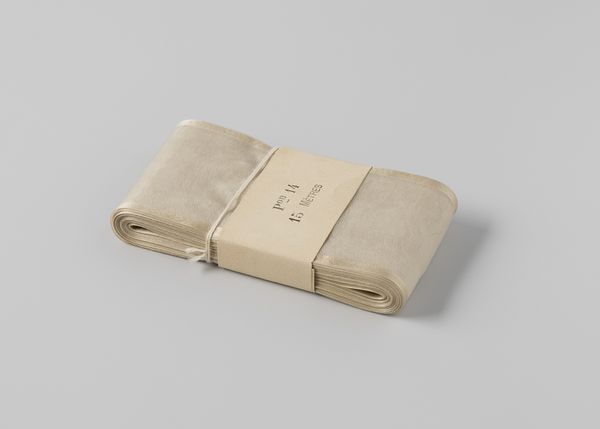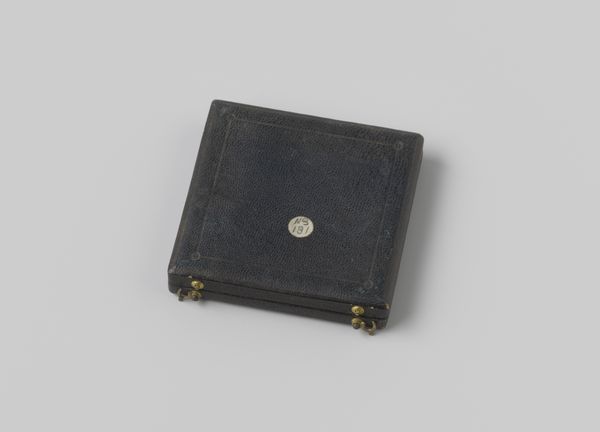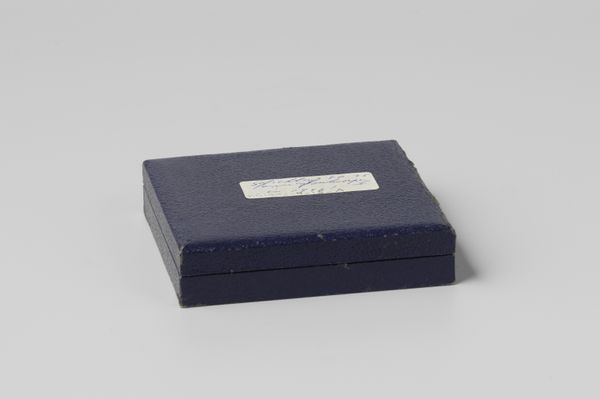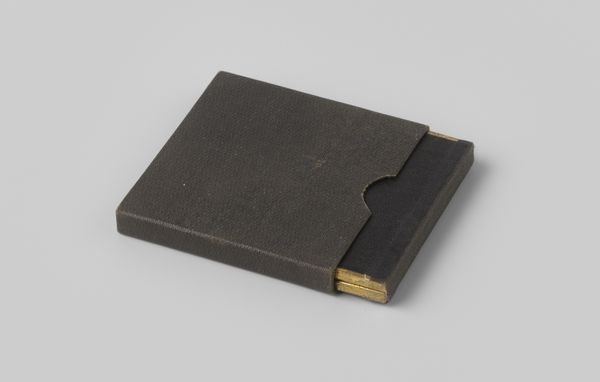
photography
#
still-life-photography
#
photography
#
product photography
Dimensions: height 0.5 cm, diameter 7 cm
Copyright: Rijks Museum: Open Domain
Curator: Well, here we have "Doos van een geuzenpenning met napje en kalebasjes", a photograph from between 1800 and 1900, its creator is unknown, and the Rijksmuseum is its home. Editor: At first glance, it’s remarkably stark, almost minimalist, for something potentially so historically charged. I see a box and what appears to be black felt. What are we actually looking at? Curator: The title translates to “Box of a Beggar’s Badge with Napkin and Gourds,” and it's likely a record—what we would call now product photography—of the elements kept inside. The contents aren't readily viewable here. This image captures them more in absence, hinting at their presence than showcasing them. Editor: Exactly, which complicates any attempt to understand this photographic record. What could this configuration symbolize during its era of creation? Given that the 'Beggar’s Badge’ has associations with Dutch revolt, I imagine some powerful messages involved. Curator: Yes, you’ve correctly identified the symbol, during the Eighty Years’ War against Spanish rule in the 16th and 17th centuries, these badges signaled allegiance and defiance. Consider the timing of the photo –late 18th or 19th century, long after those battles had ended. Does it carry a romantic association by then, a marker of identity rather than resistance? Editor: It could be a constructed or preserved identity, a tangible link back to liberation, independence, and some really turbulent political conflicts. The framing, a straightforward shot in a plain box, adds layers. It seems so detached yet intentionally curated. Was that kind of historical awareness usual at the time, or is this piece of documentary unusual? Curator: By the late 18th century the historical context would already be evolving toward heritage status. Photography here may be an early form of documentation playing to an elite and its interests of a newly forged nation's self-regard. The plain box serves to elevate rather than undermine the symbolism of the contents by presenting it cleanly for reproduction. Editor: This makes the image incredibly significant because you could argue it embodies an early form of constructed national heritage and collective identity. It serves as an illustration to how items associated to movements evolve in symbolism as time goes on. Curator: I agree; that’s where its resonance lies for our audiences now—a lens not just onto historical relics but the processes of memorializing. Editor: Precisely; it’s thought-provoking and provides scope for dialogue beyond simple cataloging, really inviting visitors to engage with its complexity.
Comments
No comments
Be the first to comment and join the conversation on the ultimate creative platform.
